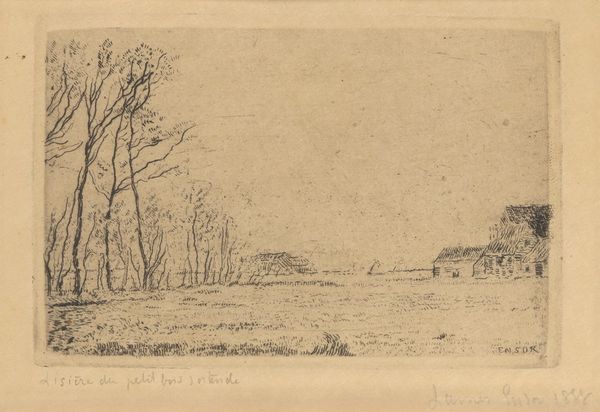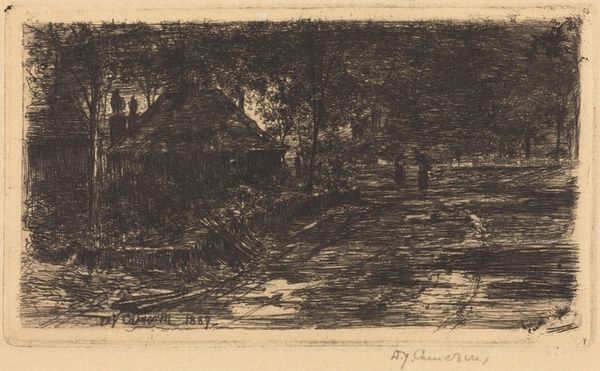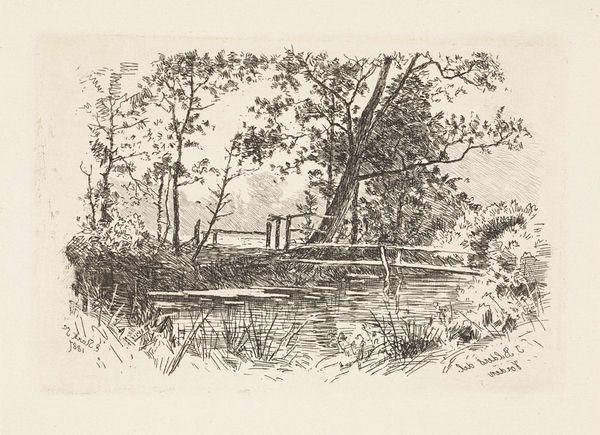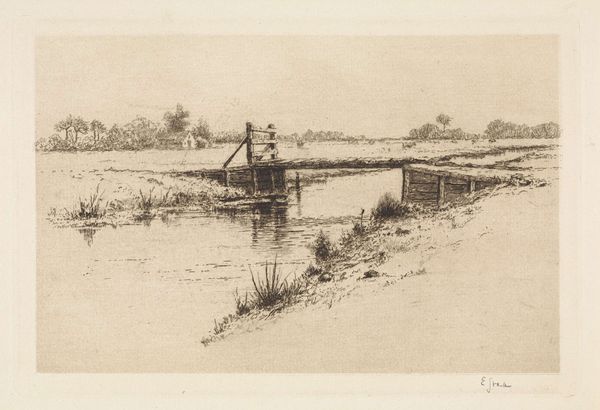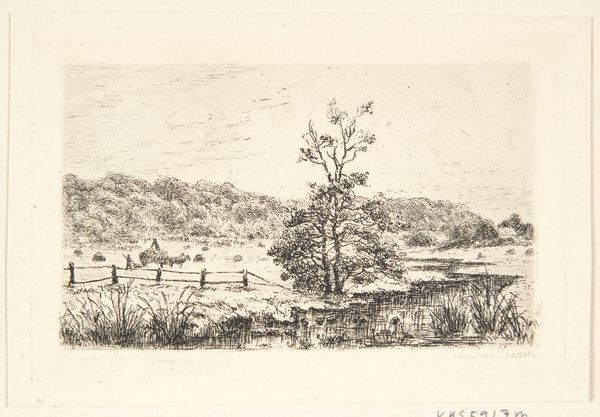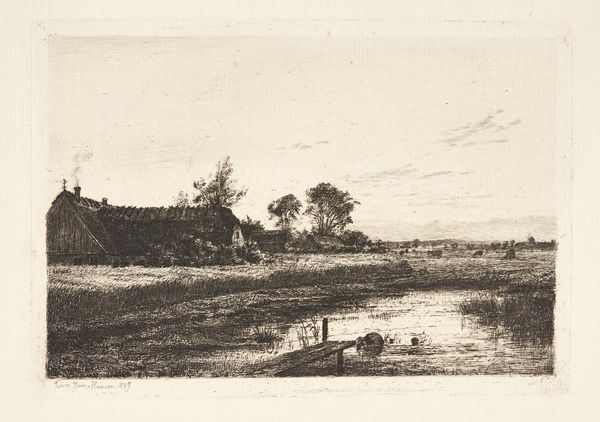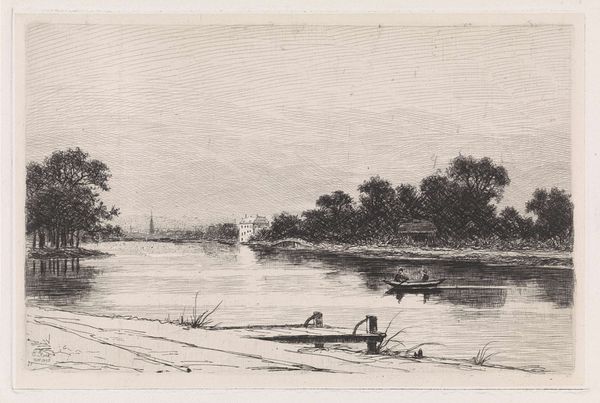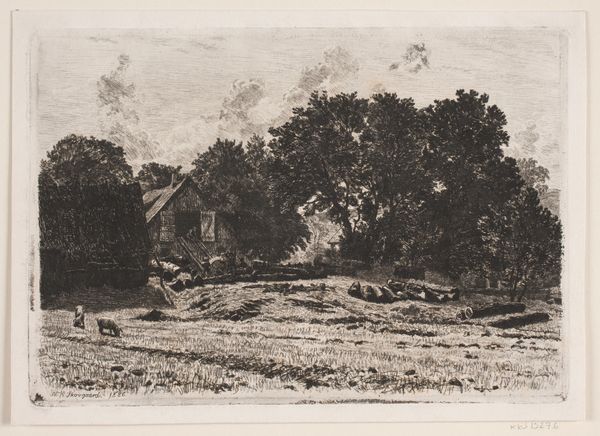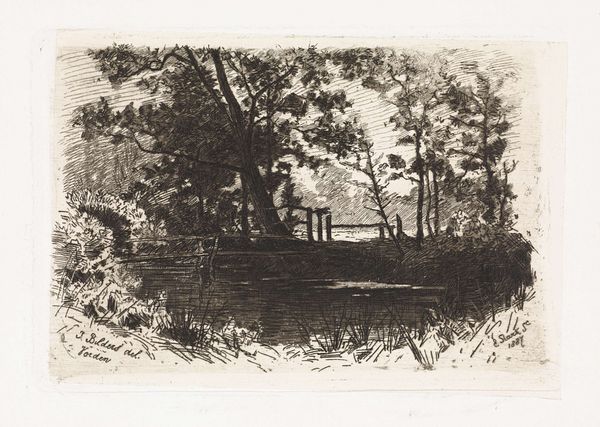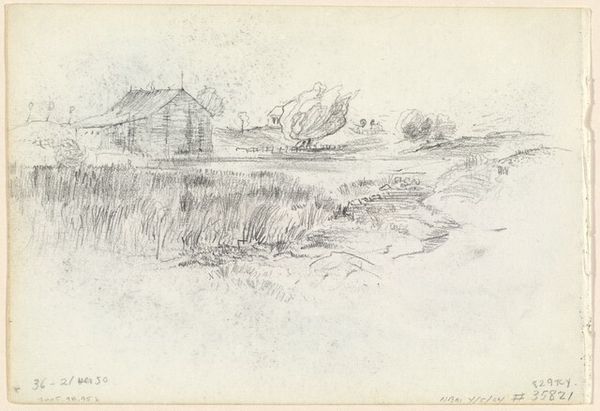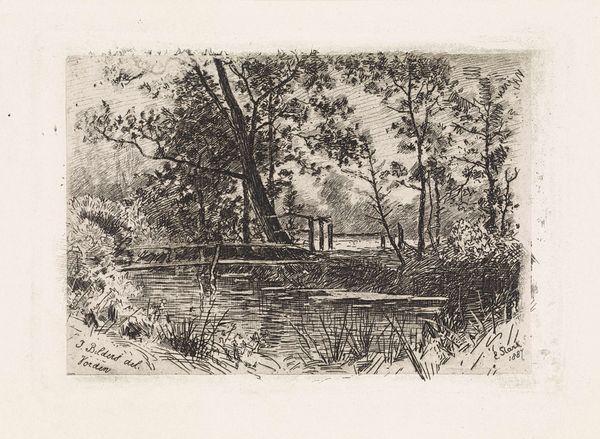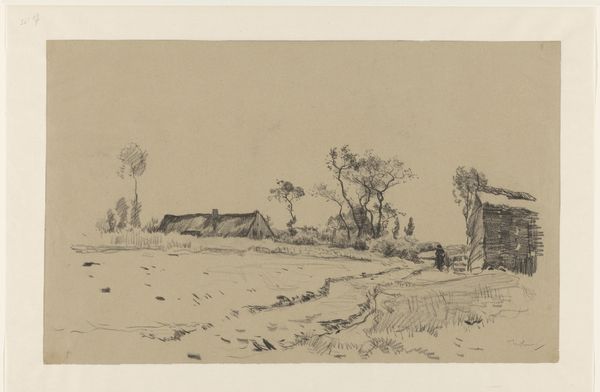
Copyright: Public Domain: Artvee
Max Liebermann crafted this etching, "Die Bleiche," capturing a seemingly simple scene: a woman amidst a field, possibly bleaching linen. However, the act of bleaching itself carries symbolic weight. Historically, the color white has been associated with purity, cleanliness, and renewal. We see this echoed in various rituals across cultures. Consider the ancient Roman practice of whitening togas with chalk, signifying civic duty and status. Similarly, in Christian tradition, white garments symbolize spiritual cleansing and rebirth, such as during baptism. The woman's labor mirrors a deeper cultural yearning for purification, echoing in countless artistic and religious expressions throughout history. The act of transforming the mundane into something pure and pristine suggests a deeper, perhaps subconscious, desire for order and renewal. This seemingly simple scene resonates with our collective memory, inviting us to contemplate the cyclical nature of purification and transformation.
Comments
No comments
Be the first to comment and join the conversation on the ultimate creative platform.

